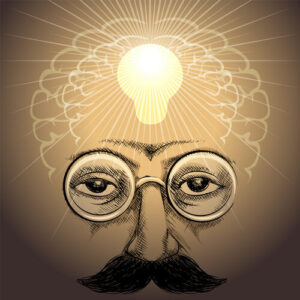As we have discussed in previous articles in this series, thought is the operant factor, it is the driver, it is the catalyst. But does it really have that much power? What is its relationship with consciousness? Which one decides? Thought or consciousness? Is this a chicken or the egg debate?
Let us step out of Science for a while and get into “pop psychology,” into “positive thinking,” where millions of individuals are being taught that “thought creates their reality.” Is this true, is this scientifically based? Is there solid evidence to back this up?
Well, yes and no. Yes, when such information is delivered accurately. No, because most of the time, those who are teaching about thought are for the most part missing a big part of the picture. As a result, they are only able to deliver part of the story. As such, those who are relying, at least solely, on this incomplete information may find themselves frustrated because most of their efforts have been in vain. Why is this? The answer to this question is related to the answer to the question posed above. Which is the decisive factor?
Let’s walk through this together:
-
There are three types of thoughts-Insightful thinking; Experiential thinking; and incessant thinking.
-
Insightful thinking and experiential thinking are the two helpful types of thinking, and they both require a minimum level of consciousness to be activated, to be experienced, and to be made useful.
-
Incessant thinking is the one unhelpful type of thinking, it requires no minimum level of consciousness to emerge, and the less consciousness involved, the more problematic it becomes. This also means through consciousness, not only does incessant thinking become less and less, but the ability to keep thoughts neutral also becomes easier and easier.
Which is the decisive factor? Does thought really have that much power?
Thought does have that much power for those at a lower state of consciousness. This means that thought increasingly loses its power as one increases one’s level of awareness. This also means the best way we help our patients and clients is by helping them raise their consciousness.
In our last CBT article entitled, The Most Important Ingredient in CBT, we explained a broader rationale behind why Consciousness is the most important ingredient in CBT. The current article is a continuation of this concept.

The simplest scientific definition of consciousness is: “That which allows us to experience and to also know that we are experiencing.” In other words, by way of an analogy, when we are watching a movie, we are able to experience it – thanks to consciousness. We get into the movie, we laugh, we get nervous, we cry, we get upset – we experience the movie as fully as possible. Our consciousness allows us to do so. Yet, we also know that it is just a movie. It is nothing more or less than a movie – despite crying, getting nervous, we still know it is a movie. Our consciousness is that which allows us to not only experience that movie but to also know that it is actually a movie. Makes sense?
Now, let us apply that. Often enough our patients are experiencing a series of feelings and:
-
Sometimes they have no clue that they are;
-
Those who know do not know how to describe them;
-
Those who are conscious of their feelings and can describe them, may not be conscious of the thoughts associated with those feelings;
-
Those who are conscious of the thoughts associated with their feelings may not have the consciousness to allow themselves to experience the feelings and/or the thoughts, while also knowing that they are just a feeling and a thought.
-
Still, those who are conscious enough to know that their thoughts are just thoughts and their feelings are just feelings, they still find themselves at their mercy.
Contrary to “pop psychology,” or “positive thinking,” Consciousness takes away the burden imposed on our patients to be constantly controlling their thoughts. Rather, our patients become so conscious that they stop being in their head and start acting beyond their past, outside their programming, and beyond their Normal Blueprint.
Would you not say this is one of the most empowering tools we can think of?
If so, please join us on Wednesday, September 7, 7-9pm EDT for CBT and Perception, where we will be introducing the 4 types of personalities/individuals based on states of Consciousness; and the 3 Steps to Consciousness-Based Integration.
We look forward to seeing you. Thank you for your dedication to both clinical excellence and to stopping the suffering in our field.
See you soon,
Karen and Mardoche